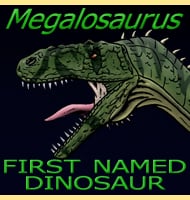Sarcosaurus
In Depth There is not a lot of information about Sarcosaurus due to the relatively incomplete remains from only the pelvic region of the body. This makes it impossible to ascertain the form and structure of other body parts such as the head, hands and feet, something that makes exact classification of this dinosaur near … Read more

